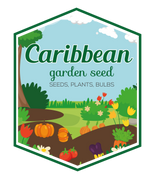
Cipollini Yellow Onion SEEDS, Italian gourmet VEGETABLE
- Get free shipping to lower 48 states on orders $54.95+ (Most Items), excluding live plants, plant bulbs, and black plastic nursery crate.
- Most orders are processed by the next day
- Select your desired size and/or color from the available options.
Matures to a small-medium, yellow cipollini onion, avg. 1 1/2-3" diam. x 3/4-1" depth. Pungent, but deliciously sweet when cooked. For bunching or braiding. Recommended for latitudes 38-60°, as necks may be too thick at lower latitudes. Suitable for short-term storage
Cipollini onions are a flat Italian heirloom variety
italian Heirloom
100 Days, 1" Thick x 2-3" Wide
Long day
Yellow variety
Cipollini translates to “little onion”
Flattened saucerlike onions
Stunning braided for storage
Thin skinned gourmet onion
Mild, sweet flavor
Sow in early spring in 2-4" wide bands or single rows 4" apart, about 1/2" between seeds. Cover 1/4- 1/2". Thinning is not necessary. Keep free of weeds. As with all onions, full sun, consistent soil moisture, and a fertile soil with a pH of 6.2-6.8 are preferable.
Planting
Onions, like most vegetables, thrive in rich organic soil. Prior to planting, work 2 to 4 in. (5 to 10 cm) of compost or humus into the soil. Plant onion plants 4 to 6 inches apart.
can be planted as soon as the ground can be worked.
Try to be careful about the fertilizers you use for onions. Onions tend to be more pungent when grown on soils with a high sulfur content. Choose a nitrate-based fertilizer over a sulfate-based fertilizer. Ask your local garden center expert for the right fertilizer. The fertilizer bag, even on all-purpose fertilizers, 12-24-12 for example, may indicate the components used to formulate the fertilizer.
Care Tips/Maintenance
Onions may need lots of moisture at the beginning, but less when the bulbs are approaching full size. When the tops begin to fall over naturally, it's time to pull the onions up.
Harvest Instructions
Members of the onion family generally give a very obvious signal when they are ready to harvest. The tops fall over and the tips of the leaves start to turn brown. In addition, the bulbs are full size. Pull the onions, shake off any soil, but do not wash them or pull off any outside wrapper leaves.
LET OUR CUSTOMER SPEAK FOR US

![[Seeds] - Caribbeangardenseed](http://caribbeangardenseed.com/cdn/shop/files/gift-card-gift-card-1_1024x1024_dfa857db-9150-4315-a362-7f0bb3fb9c47_60x28.png?v=1722895789)







